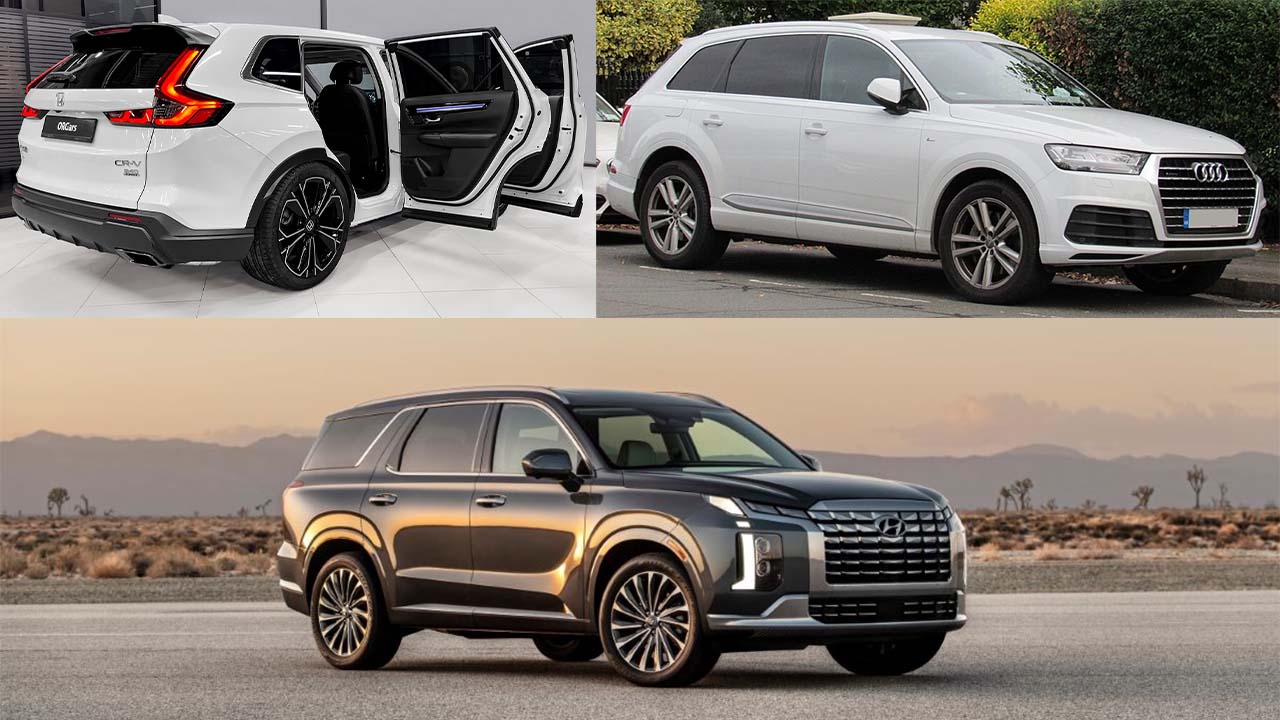Midsize SUVs have emerged as some of the most sought-after vehicles in today’s market. This segment features some of the most practical, adaptable, and cost-effective SUV options available.
Many of these midsize models are now equipped with three rows of seating, spacious interiors, solid towing capabilities, and commendable safety scores.
Is safety a priority for you? It’s often one of the most crucial considerations when purchasing a vehicle. A strong safety rating significantly enhances a vehicle’s appeal, especially for buyers who need a dependable ride for their families.
SUVs With Great Safety Ratings
The rise in SUV popularity has led to a focus on identifying the safest midsize SUVs you can buy and use daily. These particular SUVs deserve to be among your top contenders when selecting the ideal vehicle to drive.
5. 2025 Genesis GV80
The 2025 Genesis GV80 is one of the most complete and well-rounded luxury midsize SUVs currently available.
It features outstanding safety ratings, a luxurious and elegant interior, confident handling, and a smooth, composed ride.
For 2025, the GV80 has been refreshed with updated exterior and interior styling, enhancing its premium appeal.
Among the most popular powertrain configurations is a 3.5-liter twin-turbocharged V6 engine paired with an 8-speed automatic transmission, delivering 375 horsepower and 391 lb-ft of torque.
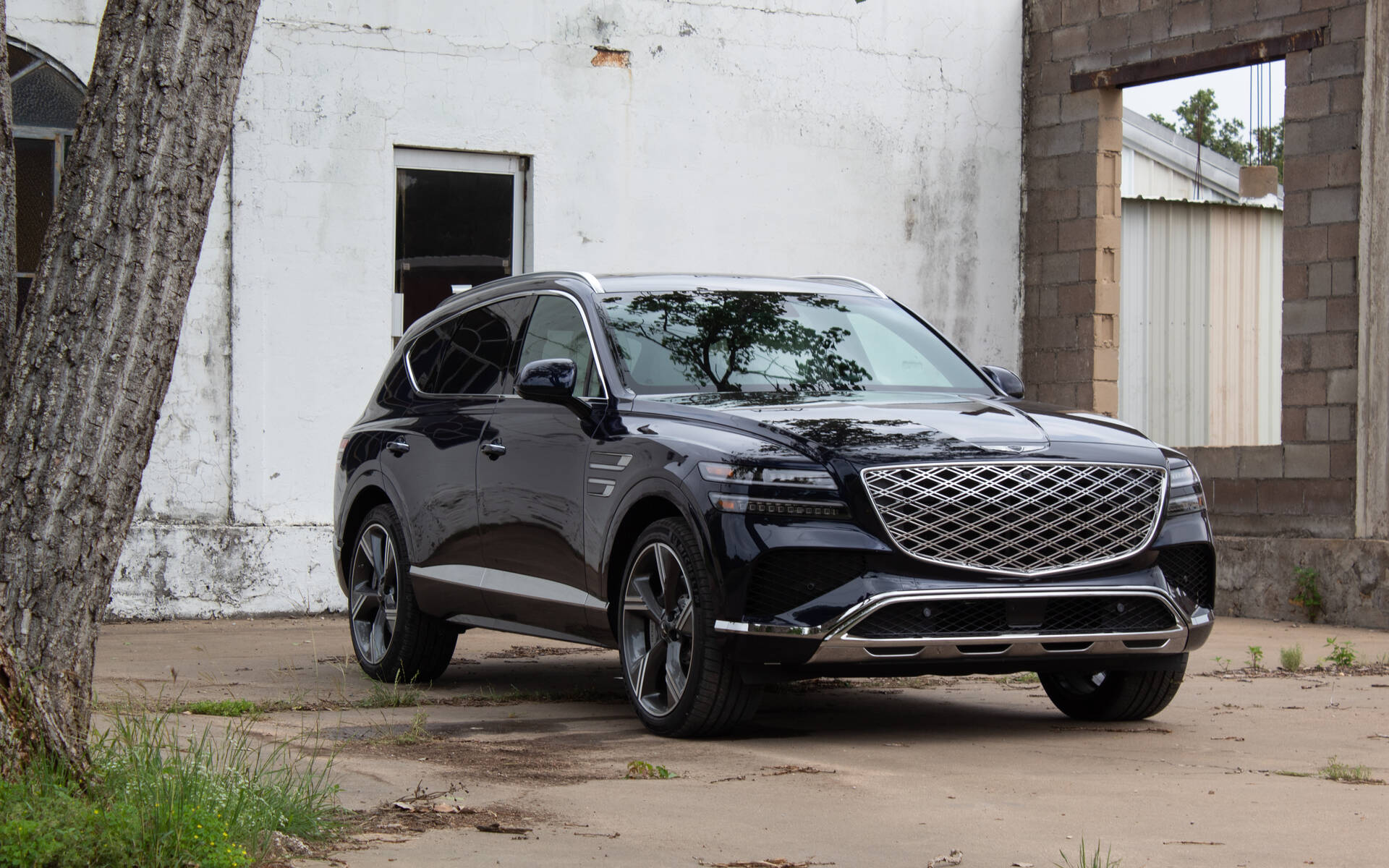
The SUV comes with all-wheel drive and offers a towing capacity of 6,000 pounds, while fuel efficiency is rated at 16 mpg in the city and 22 mpg on the highway.
This Genesis SUV stands as a strong competitor in the luxury SUV segment, offering impressive safety scores and a comprehensive package of advanced driver-assistance systems designed to alert the driver of potential issues on the road.
It provides excellent value, with a premium experience at a more accessible price point. The GV80 is not only beautiful inside and out, but it also delivers a smooth driving experience on various road conditions.
However, it does have some drawbacks, including the lack of hybrid options in an increasingly electrified market, no third-row seating with the turbocharged four-cylinder engine, and a somewhat cramped third-row space in models that include it.
Also Read: 12 Worst GM Cars Ever Built and 10 of the Best
4. Audi Q7
The 2025 Audi Q7 not only features one of the most refined interiors in its class but also ranks as one of the safest midsize SUVs available.
This model earns top safety ratings and is equipped with an outstanding suite of safety technologies that provide both warnings and active intervention to help keep you secure on the road.
Under the hood, the most popular powertrain includes a 3.0-liter turbocharged V6 mild-hybrid engine, paired with an 8-speed automatic transmission.
This setup delivers 335 horsepower and 369 lb-ft of torque. The Q7 comes with all-wheel drive and achieves a fuel efficiency rating of 18 mpg in the city and 23 mpg on the highway.
Additionally, it offers an impressive towing capacity of 7,700 pounds, making it as capable as it is luxurious.
If you’re looking for a high-end midsize SUV that embodies Audi’s signature blend of performance, comfort, and advanced technology, the Q7 is an excellent option.
Its cabin is both elegant and tech-rich, providing a premium driving experience from every seat. On the plus side, it offers engaging driving dynamics, a top-tier interior, and a long list of desirable tech features.
However, it does have a few drawbacks, such as a third row that’s cramped for adults, cargo space that’s less generous than some competitors, and a higher price tag that reflects its premium positioning.
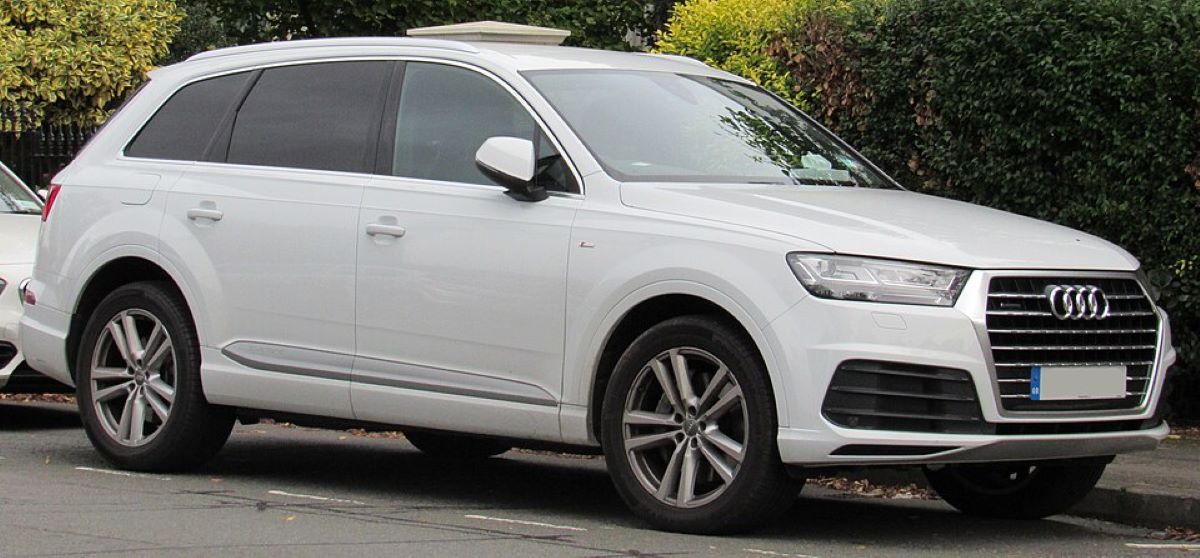
The Audi Q7, a flagship large SUV, has long been regarded for its versatility, practicality, and refinement. Launched in 2007, it quickly became a luxury 4×4 that was continually updated to stay competitive.
The second-generation model arrived in 2015, marking a significant redesign, while a major facelift was introduced in 2020.
In 2024, the Q7 received another update as part of a final push before the debut of the third-generation model in 2026, which will likely be one of the last new Audis to feature a combustion engine.
Audi hopes that this update, which brings several styling tweaks and new technology, will help the Q7 remain competitive against a wide range of rivals, such as the Land Rover Defender, BMW X5, and new Volvo XC90, as well as upcoming electric competitors like the Kia EV9 and Hyundai Ioniq 9.
As Audi expands its electric range with e-tron models and hybrid vehicles, the question arises as to whether the Q7 can still maintain its leading position in the luxury SUV market.
The Audi Q7 continues to impress with its refinement, spacious interior, and exceptional material quality. However, its plug-in hybrid (PHEV) variant struggles to keep pace with rival large SUVs in terms of range.
The cabin remains a standout, offering an environment that’s quieter and more refined than many of its competitors, and it offers more room than most seven-seat SUVs.
On the downside, the steering, which is heavily reliant on assistance systems, feels distant, and the Q7 lacks the handling finesse found in some rivals. Additionally, the PHEV model’s range remains limited compared to its competitors.
In terms of design, the recent facelift is subtle, with updates including new front and rear bumpers, a refreshed front radiator grille, and upgraded Matrix LED headlights.
Audi has also added a few new paint and wheel options, but the overall design is beginning to show its age when compared to newer rivals.
While the Q7 offers a broad mix of engine choices, including petrol, diesel, and hybrid, the PHEV version is heavier than its internal combustion engine counterparts and does not offer a seven-seat configuration, limiting its appeal for those needing extra seating capacity.
The engine lineup remains largely unchanged. The entry-level 45 TDI is powered by a 3.0-liter diesel V6, producing 227 horsepower and 368 lb-ft of torque. A more powerful 55 TDI variant also uses the 3.0-liter diesel V6 but offers 282 horsepower and 74 lb-ft more torque.
For those preferring petrol, the 55 TFSI comes with a 3.0-liter V6 that produces 335 horsepower, cutting the 0-60mph time to 5.6 seconds, although fuel economy is a bit lower, with an average of around 26mpg.
For those seeking top-tier performance, the SQ7 features a 500-horsepower twin-turbocharged V8, allowing the SUV to accelerate to 60mph in just 4.1 seconds, outperforming both the Land Rover Defender V8 and the Mercedes-AMG GLS 63. However, this performance comes at the cost of fuel efficiency.
3. Mercedes-Benz GLE-Class
The 2025 Mercedes-Benz GLE-Class is equipped with a comprehensive range of safety technologies, including a surround-view parking camera system, forward collision warning, front and rear sensors, driver-attention monitoring, and a hands-free park assist system.
These advanced features work together to enhance safety and driver confidence while navigating this luxury SUV.
The most popular powertrain for this model features a 2.0-liter turbocharged 4-cylinder mild hybrid engine, paired with a 9-speed automatic transmission.
This configuration delivers 255 horsepower and 295 lb-ft of torque. The GLE-Class comes with all-wheel drive as standard and provides a fuel efficiency rating of 19 mpg in the city and 26 mpg on the highway.
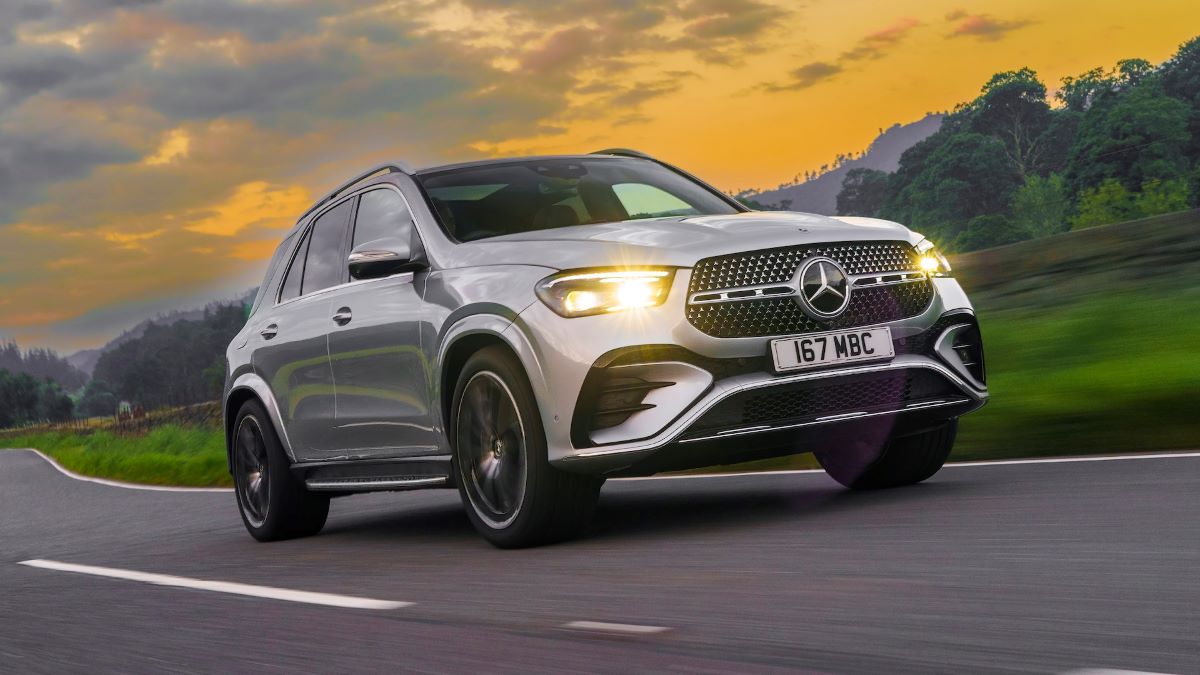
It also offers a strong towing capacity of 7,700 pounds, combining luxury and utility in one package.
This SUV from Mercedes-Benz stands out with its sophisticated design and spacious interior, making it an excellent choice for those seeking a high-end crossover.
It comes standard with all-wheel drive and also offers a plug-in hybrid (PHEV) option. The GLE-Class provides three rows of comfortable seating and delivers the level of performance drivers expect from a luxury vehicle.
Among its strengths are a luxurious and refined cabin, highly effective voice controls, and a broad selection of engine options.
However, there are a few downsides to consider, including the impact of larger wheels on ride comfort, limitations in the third-row seating, and the high cost of optional features that can quickly increase the overall price.
2. Hyundai Palisade
The 2025 Hyundai Palisade comes very close to earning the coveted “plus” distinction in its IIHS rating. Nevertheless, it still ranks as one of the safest SUVs available. The NHTSA has awarded the Palisade a five-star rating, reinforcing its reputation as a safe and reliable midsize SUV.
The most popular powertrain configuration includes a 3.8-liter V6 engine mated to an 8-speed automatic transmission. This setup produces 291 horsepower and 262 lb-ft of torque.
The Palisade is equipped with all-wheel drive and offers a towing capacity of 5,000 pounds. In terms of fuel efficiency, it achieves 19 mpg in the city and 24 mpg on the highway.

For those in search of a three-row midsize SUV that delivers both practicality and value, the Hyundai Palisade stands out as a strong option.
In the 2025 model year, it receives minor updates to its trim and feature offerings, keeping the SUV current and competitive.
Highlights of the Palisade include an attractively designed cabin, a generous array of standard features, and a wide selection of available upgrades that bring near-luxury comfort and convenience.
However, it’s not without its drawbacks. The door storage pockets are narrow and not very functional, wind noise can be noticeable at higher speeds, and the fuel efficiency falls short compared to some rivals.
1. Kia Telluride
The 2025 Kia Telluride stands out as one of the most well-balanced SUVs in its class, offering a compelling mix of practicality, value, and refined design.
With top-tier safety ratings and high overall rankings, the Telluride continues to earn its reputation as a standout midsize SUV.
The Kia Telluride, the largest and most prestigious model in Kia’s expansive product lineup, has been a staple in North America for the past six years, earning a slew of awards along the way.
In Canada, the all-wheel-drive, seven- to eight-passenger Telluride is offered in five trim levels: EX, SX, SX Limited, X-Line, and X-Pro. The Telluride shares its platform and many features with its corporate sibling, the Hyundai Palisade.
The Telluride competes in the highly competitive three-row crossover segment, going up against rivals such as the Hyundai Palisade, Toyota Highlander, Honda Pilot, Volkswagen Atlas, and Ford Explorer.
For the 2025 model year, the Kia Telluride is available in five trims with Canadian pricing ranging from $50,995 to $63,695 MSRP.
The base EX AWD model starts at $50,995 and comes with a 3.8-liter V-6 engine. The mid-range SX Limited AWD trim is priced at $59,995, while the top-of-the-line X-Pro AWD trim reaches $63,695.
Additional charges for Freight and PDI (or Destination/Delivery fees, depending on the brand) add $2,100, though this amount can vary by province and dealer.
The 2025 Kia Telluride comes equipped with a 3.8-liter V-6 gasoline engine, producing a maximum power output of 291 horsepower at 6,000 rpm and 262 lb-ft of torque at 5,200 rpm.
It utilizes an 8-speed automatic transmission and features an all-wheel-drive (AWD) drivetrain. Cargo space ranges from 601 liters (21.2 cubic feet) to 1,304 liters (46.1 cubic feet), depending on the seating configuration.
The Telluride also has a towing capacity of 2,268 kg (5,000 lbs) and a payload capacity of 722 kg (1,592 lbs). The SUV rides on 20-inch alloy wheels and includes an infotainment system with a 4.20-inch touchscreen, along with Apple CarPlay and Android Auto compatibility.
It comes with all-wheel drive and delivers fuel efficiency figures of 18 mpg in the city and 23 mpg on the highway. The Telluride also provides a towing capacity of 5,000 pounds, making it as capable as it is comfortable.
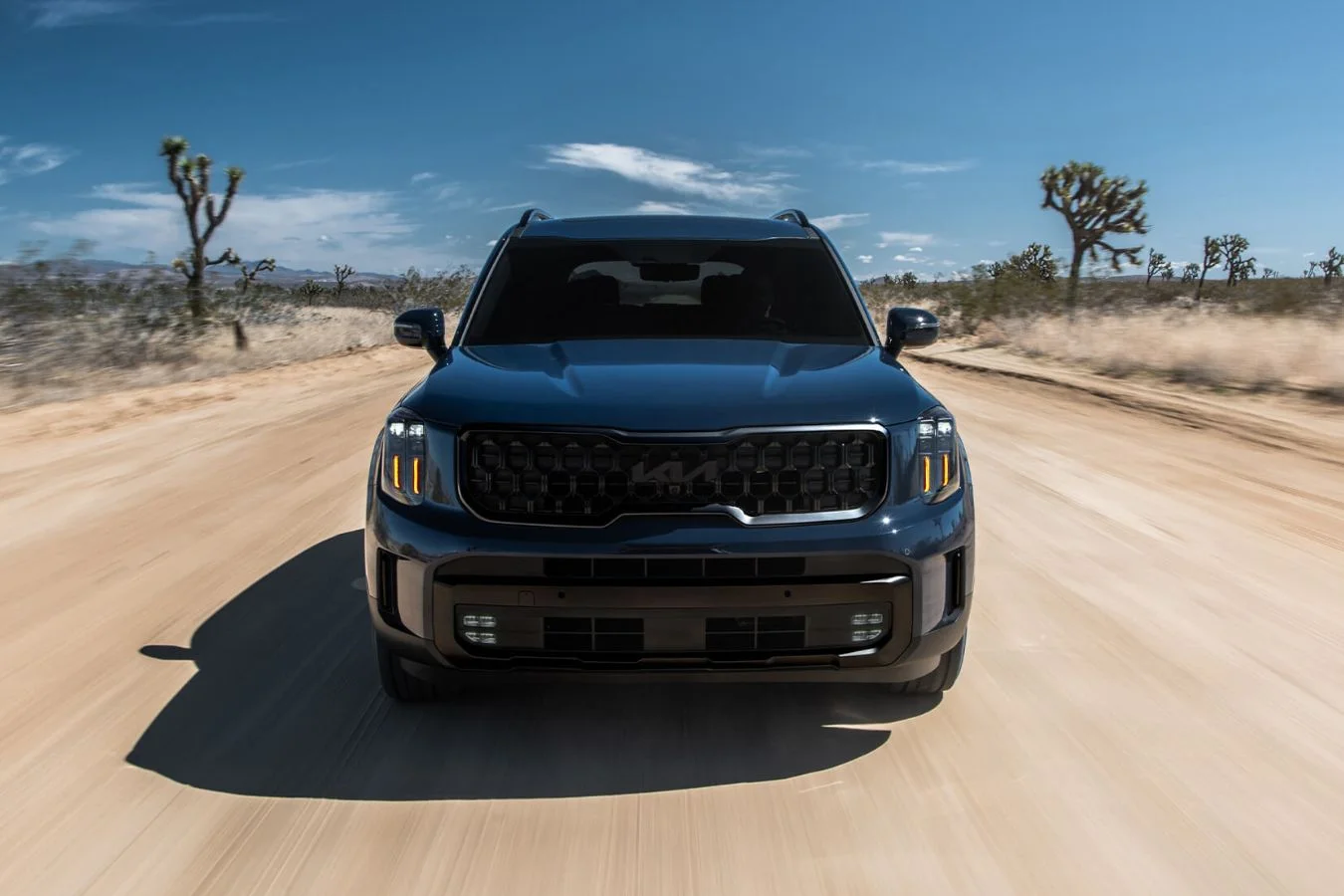
Kia equips the Telluride with a comprehensive suite of advanced safety features designed to keep you informed and protected.
These include pedestrian and cyclist detection, blind-spot monitoring, rear parking sensors, traffic-sign recognition, and a host of other driver-assist technologies.
The Telluride’s strengths lie in its spacious and accommodating seating across all three rows, a generous list of standard features, and a level of refinement that surpasses many of its competitors.
However, it does have a few shortcomings, such as the lack of hybrid or four-cylinder powertrain options, handling that isn’t quite as sharp as some rivals, and driver-assistance systems that can occasionally be overly sensitive.
Also Read: 10 Best Cars for Families and 5 You Might Regret
SUVs With Poor Crash Results
When you’re in the market for an SUV, design, performance, and legroom are likely among your top priorities. However, just because an SUV appears impressive doesn’t necessarily mean it’s built with your safety in mind.
The structural integrity of your vehicle can truly be a life-or-death factor in the event of a collision. That’s where crash test results and safety ratings become essential.
Respected organizations such as the Insurance Institute for Highway Safety (IIHS) and the National Highway Traffic Safety Administration (NHTSA) evaluate crashworthiness, occupant protection, and a vehicle’s structural durability.
These assessments include a variety of crash simulations and tests such as roof strength and rollover resistance to simulate real-world accident scenarios, including cases where the vehicle might flip over. Based on their findings, they release safety ratings for each vehicle.
Understanding these safety ratings can be challenging if you’re not familiar with how they work. The NHTSA uses a five-star system to rank vehicle safety, whereas the IIHS employs a more detailed scale, rating vehicles as “Good,” “Acceptable,” “Marginal,” or “Poor.”
With that in mind, here are eight newly released SUVs that earned some of the lowest safety ratings.
5. 2024 Cadillac Escalade
Another major name featured on this list, the Cadillac Escalade made a grand entrance toward the end of the 20th century, and since then, few SUVs have matched it in terms of size and elegance.
Our review of the 2024 model confirmed that it upholds the tradition with a bold exterior design, a high-end interior, and cutting-edge technology that aims to impress. However, when it comes to safety, the Escalade doesn’t quite meet expectations.
The NHTSA awarded it a four-star overall safety rating, with one star likely docked due to a less-than-perfect performance in the passenger-side frontal crash test.
In the rollover evaluation, the Escalade earned just three stars, reflecting a lower level of resilience in a loss-of-control scenario. As of now, the IIHS has not conducted crash testing on the 2024 Cadillac Escalade.
While the Escalade remains a favorite among those seeking top-tier comfort, luxury, and innovation, safety is an area where it could and should improve.
Given its size and premium price tag, consumers should expect a level of safety that matches its upscale features.
As such, it may be worth considering other alternatives that, although smaller and more affordable, may offer better protection.
The 2024 Cadillac Escalade marks a significant milestone as it celebrates 25 years of production for the large luxury SUV.
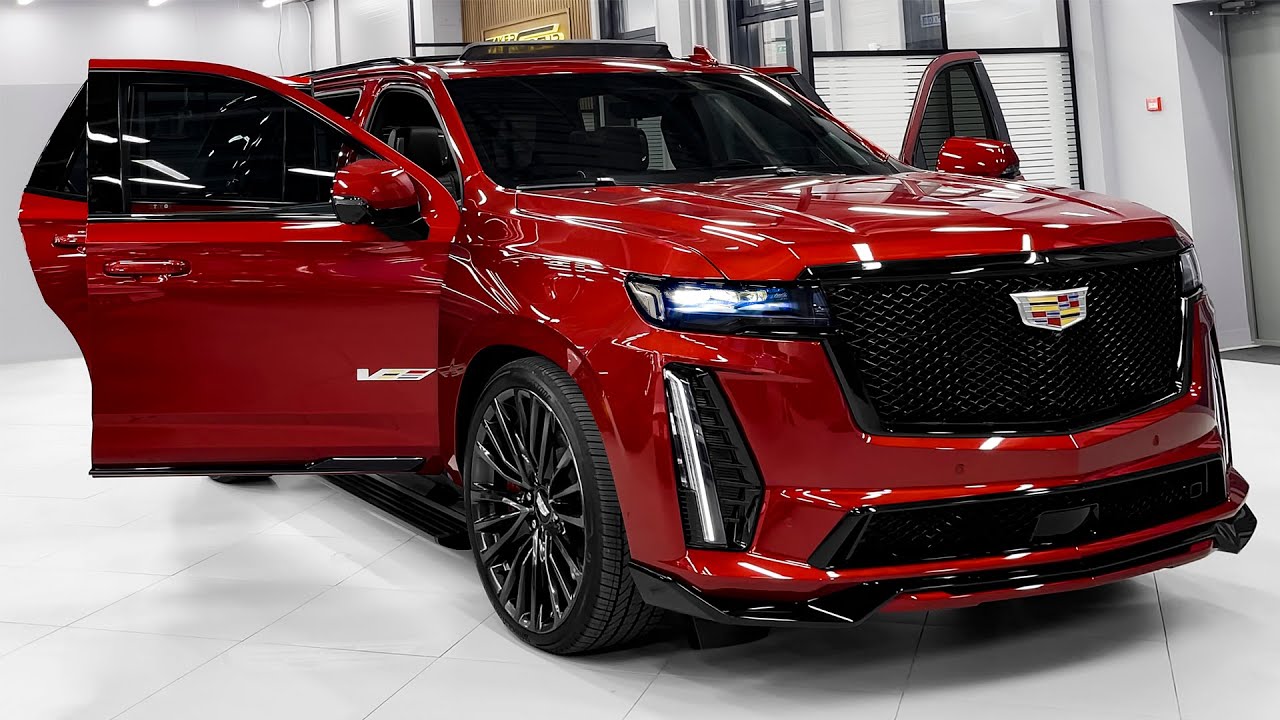
This achievement is all the more impressive considering the rising fuel costs, the decreasing demand for larger engines, and the ongoing transition towards more environmentally friendly vehicles.
Much like Cadillac’s grand mid-20th-century land yachts, the Escalade epitomizes modern American luxury.
It’s big, bold, and practical, capable of seating up to eight passengers and towing hefty loads. Today, it serves as Cadillac’s version of the Eldorado and Coupe DeVille.
In terms of its design, the Escalade was updated in 2021, and the introduction of the Escalade-V trim last year brought even more excitement with its aggressive styling and nearly 700 horsepower—an astonishing amount of power for a vehicle that weighs almost 6,000 pounds.
Even the standard 6.2-liter V8 engine provides impressive performance, reaching 60 mph in just 6.7 seconds, which is quick for a vehicle of its size.
The Escalade remains a popular choice in the large luxury SUV segment, though it faces stiff competition.
Rivals include the Lincoln Navigator and Mercedes-Benz GLS. Like the Escalade, the Navigator comes in both standard and long-wheelbase versions and offers a more opulent interior.
The GLS, on the other hand, may not match the Escalade’s interior space or towing capabilities, but it impresses with its advanced technology and luxurious materials.
Other competitors like the BMW X7 offer cutting-edge tech and a more agile driving experience, while the Range Rover remains a strong contender, particularly among British elites.
Pricing for the 2024 Escalade varies depending on the trim and features. The cost of driving estimates, for the 2024 Escalade Luxury 4dr SUV with the 6.2L V8 engine, stands at around $300 per month based on 15,000 miles of driving per year. For comparison, the average monthly cost for large SUVs is about $226.
The Escalade still packs immense power, and its updates, including minor changes to driver assistance features and the new Escalade-V trim, make it a formidable presence in the luxury SUV market.
However, it’s not without some drawbacks, such as the difficulty in using the climate controls at night and a rear cabin that lags behind class leaders in terms of interior quality.
Still, with its impressive cargo space, roomy cabin, and boisterous V8 power, the Escalade remains a top choice for those in search of a luxury SUV with plenty of muscle and practicality.
4. 2024 Audi Q3
Although Audi SUVs are not particularly dominant in the U.S. market, the introduction of the Q3 in 2011 made a notable impact as one of the brand’s most compact and reliable models.
The 2024 Audi Q3 delivers on expectations for a modern luxury SUV it’s stylish, comfortable, and loaded with technology. However, Audi didn’t quite hit the mark when it comes to safety performance.
Its structural integrity and safety cage did receive a relatively strong score something not often seen on this list but the IIHS rated it “Marginal” in the moderate overlap front crash test.
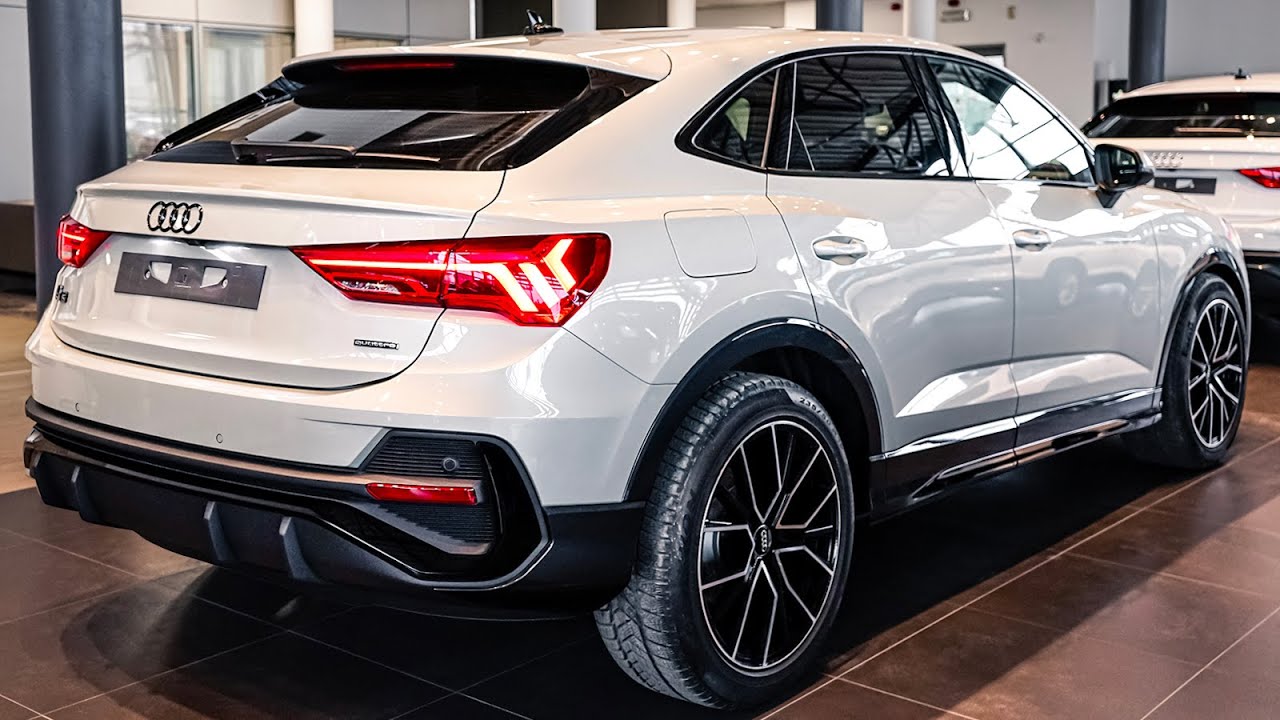
Additionally, the Q3 only received an “Acceptable” grade in the updated side-impact test, which is crucial for evaluating how well the vehicle protects backseat passengers in side collisions.
On the other hand, the NHTSA gave the Q3 a five-star overall rating, including a perfect score for the side crash test.
While the 2024 Q3 does include a suite of standard safety features, which can help avoid accidents, these cannot fully compensate for its underwhelming crash-test results.
3. 2024 Honda CR-V
The Honda CR-V is a long-standing favorite among U.S. drivers, prized for offering a dependable, comfortable, and practical driving experience.
Whether you’re commuting daily or embarking on a weekend road trip, the CR-V usually delivers and until recently, it also enjoyed a solid reputation for safety. Unfortunately, the 2024 model marks a step back in that regard.
While the 2024 CR-V performed reasonably well in most IIHS crash tests, it stumbled in the updated side-impact test, earning only an “Acceptable” rating instead of the top-tier “Good.”
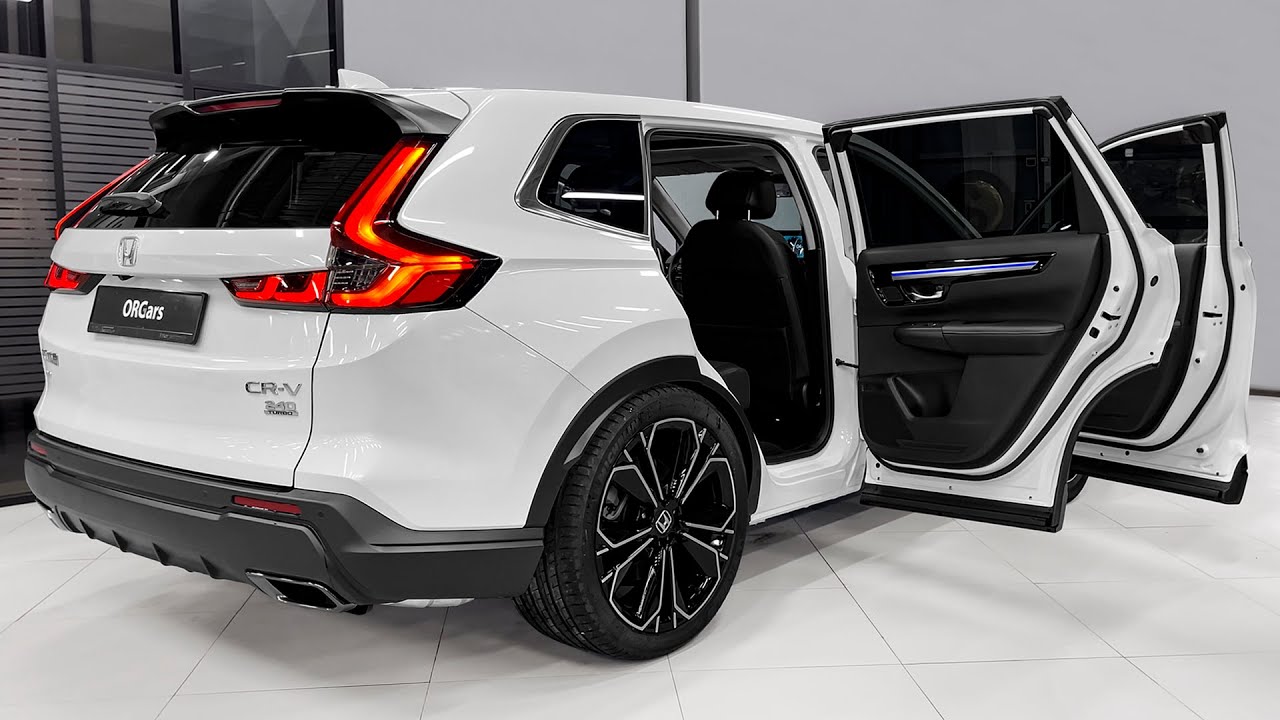
This may not be the lowest possible rating, but it’s a letdown for a vehicle competing in an increasingly safety-focused market. The NHTSA’s assessment of the CR-V was more favorable, with a five-star overall rating.
However, the vehicle has racked up 255 driver complaints, suggesting notable user concerns.
Perhaps most troubling is the “Poor” rating it received in the IIHS moderate overlap front crash test an issue that has plagued the CR-V since the 2021 model.
If these results make you think twice about the CR-V, don’t worry there are still plenty of solid alternatives out there that prioritize safety.
2. 2024 Chevrolet Equinox
Chevrolet is widely recognized for its lineup of iconic pickup trucks, so when the brand entered the compact SUV segment with the launch of the Equinox in 2005, many were curious to see how it would perform.
Depending on the model year, the Equinox can offer a smooth ride, solid fuel economy, and a decent amount of legroom. However, when it comes to safety especially in the case of the 2024 model things become less dependable.
In terms of crash performance and avoidance capabilities, the 2024 Equinox fared remarkably poorly. According to the IIHS and their updated testing methods, the vehicle earned a “Poor” rating the lowest grade possible.

It also struggled significantly in the crash avoidance and mitigation evaluations, lacking several essential safety features for drivers, passengers, and even pedestrians.
On the flip side, the NHTSA awarded the 2024 Equinox top scores in every crash test. However, the model was not without issues 58 complaints were logged by users.
While Chevrolet does equip the Equinox with its Safety Assist system, anyone prioritizing crash protection should look into other SUV options with more consistent safety credentials.
The 2024 Chevrolet Equinox, which was last updated for the 2022 model year, enters the market with slight modifications, including a change in its available paint colors and the addition of new active driver assistance features.
As Chevrolet’s entry into the highly competitive compact SUV segment, the 2024 Equinox competes with well-established rivals like the Toyota RAV4, Honda CR-V, and Nissan Rogue.
For 2024, the Driver Confidence II package now includes blind-spot monitoring and rear cross-traffic alert, and it is standard on the LT, RS, and Premier trims.
The paint options have also been updated, with the addition of Riptide Blue Metallic and Lakeshore Blue Metallic colors.
While the 2024 Chevrolet Equinox has a spacious interior and a user-friendly technology suite, it falls short in terms of its drivetrain performance.
The engine, a 1.5-liter turbocharged four-cylinder, produces 175 horsepower and 203 lb-ft of torque, mated to a six-speed automatic transmission.
However, the transmission detracts from the overall refinement of the vehicle, with sluggish gear shifts and hesitation when moving out of first gear.
This results in a drivetrain that is neither smooth nor particularly responsive, leaving the Equinox lacking in terms of driving satisfaction.
On the plus side, the Equinox does offer good handling, with a taut suspension that provides a nimble driving experience, particularly on twisty roads. However, the suspension’s somewhat harsh damping on rough surfaces can detract from overall comfort.
The RS trim, which includes sporty cosmetic enhancements, adds to the Equinox’s sporty look and helps the vehicle feel more agile in corners.
Despite a solid list of features and a competitive starting price, the long-term value of the 2024 Equinox may not be as strong as its competitors.
Factors such as depreciation and maintenance costs are less favorable compared to some of the segment’s top performers.
Although the Equinox does have redeeming qualities, it ultimately ranks toward the back of the compact SUV pack.
In terms of fuel economy, all gas-powered 2024 Equinox models are equipped with the 1.5-liter turbocharged engine and come with front-wheel drive as standard, with all-wheel drive available on all trims.
For 2023, the EPA rated the front-wheel-drive Equinox at 26 mpg in the city and 31 mpg on the highway, while the all-wheel-drive version was rated at 24 mpg city and 30 mpg highway.
In testing, a 2022 Chevrolet Equinox RS accelerated from 0 to 60 mph in 8.9 seconds, which is relatively slow for the segment.
1. 2024 Jeep Compass
Wrapping up the list is the 2024 Jeep Compass. Jeep is often praised for producing some of the more underrated vehicles on the market.
When the Compass debuted in 2007, it was positioned as a rugged SUV ideal for adventurous drivers, with off-road capabilities that appealed to thrill-seekers.
The 2024 Jeep Compass is a compact SUV that offers a blend of rugged capability and modern features, appealing to those seeking versatility in urban and off-road settings.
It comes with a 2.0-liter turbocharged four-cylinder engine delivering 200 horsepower and 221 lb-ft of torque, paired with an eight-speed automatic transmission and standard four-wheel drive across all trims.
This setup enables the Compass to accelerate from 0 to 60 mph in approximately 7.9 seconds, which is competitive within its segment. Fuel efficiency is rated at 24 mpg in the city and 32 mpg on the highway.
The 2024 Compass is available in several trims: Sport, Latitude, Latitude Lux, Limited, and Trailhawk. The base Sport trim starts at $25,900, while the Trailhawk, designed for off-road enthusiasts, begins at $33,895.
The 2024 version also comes equipped with advanced technology and connectivity features. But despite these strong points, the Compass stumbles when evaluated for safety.

What stood out in the IIHS safety review was the Compass’ subpar performance in child safety assessments. Since SUVs are often marketed as family-friendly vehicles, this outcome raised some serious concerns.
While the Compass didn’t receive any “Poor” ratings, the bulk of its results landed at the “Marginal” level, which is far from reassuring.
Meanwhile, the NHTSA’s assessment revealed a weak spot in the front barrier test. This result indicates an increased risk of injury for both drivers and passengers in the event of a frontal collision.
If you’re a daily commuter or someone with a family, you’re likely better off considering a safer and more reliable SUV alternative.

